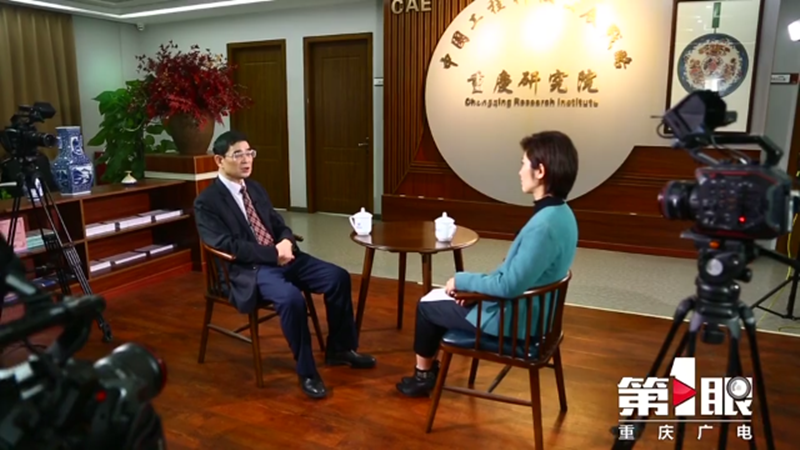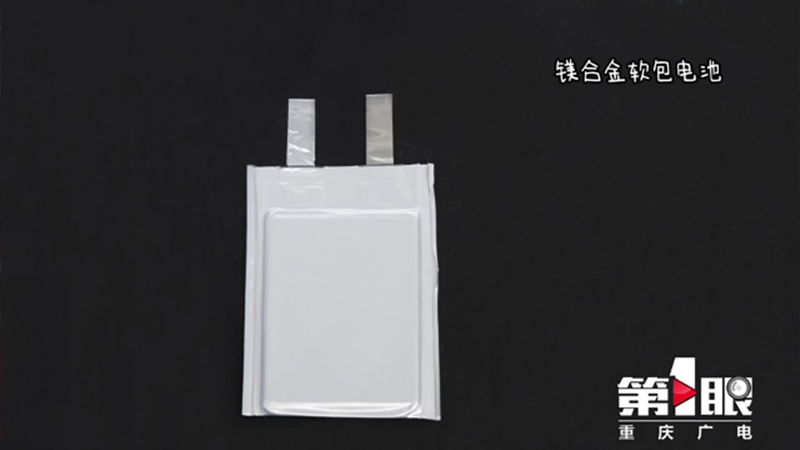The National Development and Reform Commission has recently printed and released the Implementation Plan for New-type Energy Storage Development during the "14th Five-year Plan" Period. According to the Implementation Plan, the development new-type energy storage is now brought onto the fast track. CQU's Professor Pan Fusheng, an academician of the Chinese Academy of Engineering and chairman of Chongqing Association for Science and Technology, accepted the interview of Chongqing Biography, and shared his exploring efforts in and thoughts on energy transition in the context of "Carbon Neutrality and Emission Peak".


On March 21, the National Development and Reform Commission and the National Energy Administration released the Implementation Plan for New-type Energy Storage Development during the "14th Five-year Plan" Period, and made clear that the new-type energy storage is expected to transit from the initial stage of commercialization to the scale development stage in 2025, and meet the conditions for large-scale commercial application. By the year of 2030, the new-type energy storage will have entered the stage of comprehensive market-oriented development.
Pan Fusheng: As for how we are expected to achieve the "Carbon Neutrality and Emission Peak" goal, and solve problems with energy conservation and emission reduction and energy transition, in particular problems with energy consumption and pollution, in my opinion, we need to lay particular emphasis on the following two approaches. The first approach is energy conservation and emission reduction and the second approach is energy transition. Energy conservation and emission reduction mainly refers to the reduction of energy consumption and pollution reduction in the production and application process that are achieved mainly through improvement in technology and process. The second approach is energy transition. In my opinion, energy transition is the most critical and the most fundamental approach to solving problems with "Carbon Neutrality and Emission Peak" in the future.
At present, thermal power accounts for the majority of the power structure of China, which is not expected to come to an end in the near future. However, for the long run, this problem has to be solved. But how? From my perspective, we have to identify the technologies. Why is that? Renewable energy is unstable. The sun comes and goes, and so does wind. So it is very difficult to guarantee stability of electric power. It cannot be connected to the grid or transmitted if it's unstable. Much of the renewable energy ends up being wasted. The waste of photovoltaic power and wind power is currently immense in China. Statistics showed that the waste of photovoltaic power and wind power equaled to the power generated by the Three Gorges Hydropower Plant in a year. Such waste is unimaginably immense. Before we solve the problems with power transmission and grid connection, or problems with power storage and transmission, it is very hard to realize use of renewable energy. Besides, clean energy strategy has been identified as one of the next strategies of global development. Hydrogen energy is a kind of clean energy, and it is facing the same problems.
Bing Ji: That explains why you care so much about new-generation energy storage materials.
Pan Fusheng: Yes. This is the reason that I have particular interest in development of the new-generation energy storage materials and equipment. Only when we make the industry of energy storage material and equipment bigger and stronger will we be able to realize large-scale use of renewable energy and hydrogen energy.

According to Pan Fusheng, to realize the "Carbon Neutrality and Emission Peak" goals, it is urgently needed to build a new energy system that focuses on clean energy and renewable energy. Quite sensibly, the energy storage technology and industry closely associated with development of new energy are drawing extensive attention. During the Two Sessions (the National People's Congress and the Chinese Political Consultative Conference) of this year, as a deputy to the National People's Congress, Academician Pan Fusheng brought forward the proposal to further spur the development of China's industry of new-generation energy storage and equipment.
Bing Ji: As we know, among the front-line energy storage materials of the new generation, you are particularly familiar with Mg. I wonder in what areas of our life it is used.
Pan Fusheng: Decades ago, Mg was hardly used as a material. It was only used as an reducing agent and chemical additives in the metallurgical and chemical engineering process or manufacturing of fireworks. However, in the past 20 years, we have been laying particular emphasis on development of magnesium as a material. For instance, in the automobile industry, compared with magnesium alloy, steel and iron are much heavier, which means significantly greater fuel consumption. With weight of an automobile reduced by 10%, the fuel consumption will be reduced by 5% to 8%. Both energy consumption and emission are significantly lowered.
Bing Ji: Will this cause any safety concerns?
Pan Fusheng: Safety was a great concern in the past. However, in fact, if magnesium alloy is used in means of transportation such as automobiles, the overall weight is reduced and the center of gravity is lowered. As a result, safety of the automobile is actually improved rather than compromised. Now, magnesium alloy parts and components are now being used in more than 90% of the automobiles manufactured worldwide. Magnesium alloy parts and components are now being used or brought into use by BMW, Mercedes Benz, and GM, and domestic manufacturers including Chang'an Automobile. More than 80% or 90% of the parts and components of Volvo cars are made of magnesium alloy. As for the parts and components themselves, 90% of the steering wheels may be made of magnesium alloy. But of our greatest interest is the use of magnesium as energy storage material. When used as energy storage material, magnesium exhibits desirable battery characteristics. It may be used as material of the next-generation subversive battery. Magnesium may be used as hydrogen storage material and may become the next-generation subversive hydrogen storage material.

Bing Ji: As we know, you have said many times that the performance of magnesium battery is better than that of lithium battery. But why is that magnesium batteries are not being extensively marketed, and that most batteries we are using are lithium batteries?

Pan Fusheng: As is known to everyone, the lithium and diamond resource used for manufacturing lithium batteries is experiencing major shortage, in particular in China. There is not much left to be exploited in the world. Conservative estimation shows that the lithium and diamond resource will be depleted in 1 or 2 decades. What does that mean? That's a pretty short period of time. On the other hand, there is thousands of years' worth of magnesium alloy. Therefore, in the development process of lithium battery, the problem of resource shortage is a tough one. Moreover, in terms of safety, magnesium batteries far outperform lithium batteries. The environmental protection performance of magnesium batteries is significantly better than that of lithium batteries. As for the pollution caused by lithium batteries, there is at present no very effective solution. Of course, without lithium batteries, there would be no development of information industry in the world as we see now and we'll not be able to enjoy so many advantages in our daily life. However, the problems of lithium battery with resource, safety and environmental protection do exist. In particular, the environmental problem is alarming. Where do you dispose of the used batteries? Many would put them in the drawer first. There is no specifically effective and low-cost way to dispose of the used batteries at present.

Bing Ji: Does this mean magnesium batteries will become ideal substitutes of lithium batteries?
Pan Fusheng: The development history of magnesium battery is particularly short, and there are many problems still to be solved. Now many products have been developed in laboratories. At last year's High-Tech Fair held in Shenzhen, more than 10 magnesium battery products were exhibited. Part of the pilot plant test is expected to be carried out according to the plan and some demonstration production lines are planned to be built up. Hopefully, these magnesium battery products will be brought into use in 3 or 5 years, and possibly put into large-scale application in 5 to 10 years. However, there are many unpredictable things about scientific and technological innovation and technological breakthrough.
Pan Fusheng: We are currently working with Liangjiang New Area to build a large research platform for energy-storage material and equipment. It is positioned as a high-standard research platform for China to fulfill the "Carbon Neutrality and Emission Peak" goals and one that gathers top talents from all over the world. Liangjiang New Area Administration Committee has also made enormous efforts to this end. Chongqing University has talked with them several times. This project is currently moving ahead. Academicians Gan Yong and Li Wei, and Academician Li Hejun from Northwestern Polytechnical University are all involved.
Bing Ji: Will this platform be built in Liangjiang New Area?
Pan Fusheng: We are considering Liangjiang New Area. After it is built up, the industries built on it will hopefully lay a solid technical foundation for the next largest industry of Chongqing. The largest industry of Chongqing was previously the automobile industry and is now the emerging industry. What will be the next one? I hope that the Energy Storage Material Research Institute will exert to make all-round but targeted breakthrough.
Bing Ji: What is the most important projects you are currently undertaking?

Pan Fusheng: I'm mainly undertaking some demonstration projects. One of them is the hydrogen fueling station demonstration, which is actually about solid-state magnesium. The second one is the demonstration of distributed energy. There is huge waste of electric power between the peak and valley of power consumption. It is important to fully utilize the electric power. We may use energy-storage material to turn it into stable electric power and supply the power to households or some other scenarios. The third one we are currently considering is a large-scale demonstration energy storage station. For example, wind power and PV power in northwest China are unable to be connected to the grid. We can find ways to store the power and turn it into hydrogen and store it into the magnesium alloy, secure power stability and connect the power to the grid. This is a demonstration project we are considering this year. The most practical one, and also the one we are concentrating our efforts on, is hydrogen transportation vehicle. As I have said just now that our hydrogen transportation vehicles are unable to pass tunnels, or run for more than 200 km, and can only be allowed the access to highways in specific periods of time. This causes problems. We are planning to launch the demonstration project of hydrogen transportation vehicles that transport solid-state hydrogen. These projects are currently in process.
Source: Diyiyan News
